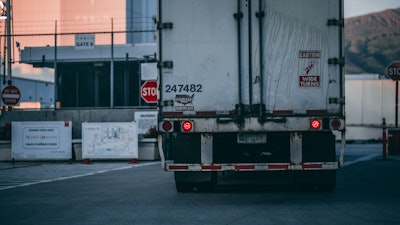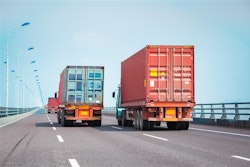
As short haul and last-mile delivery becomes a bigger part of the purchasing experience, customer service retailers and local distributors have turned to acquiring their own trucking operations rather than attempt to compete and contract with third-party firms.
Fleet operations run on a strict timetable and when there are disruptions, unpredictable fuel fluctuation, government resource allocation, supply chain delays or downtime from equipment, economic havoc can erupt. Being prepared for any type of interruption can ensure delivery solutions can recover quickly with minimal impact to the financial wellbeing of the business. Being nimble to identify the loss, correct the issue and return to full capacity are key to mitigating damages.
Insurance policies on merchandise and property are one thing; insurance coverage for over-the-road delivery is quite another.
Insurance policies are custom designed to fit the individual needs of each operation. Working with an agent to secure a mutual agreement on coverage that works best for your new fleet is an evolving partnership and should be reviewed at minimum annually. The transportation of goods to market contains variables ranging from the approval of drivers to the number of trucks on the highway. These are all variables impacting the type and amount of insurance coverage to secure to protect the investment.
Look up your agent’s contact information. Pull up your insurance policy and review your coverage. Talk to others in the industry and compare notes. Put yourself in a position to be proactive rather than reactive. If a loss occurs, being well informed on the coverage on your operation will help navigate to the road of recovery.
Some fleets elect to be fully insured. Some are self-insured, compartmentalized, even split between carriers. Some have blended coverage where they cover the “small stuff” to avoid a high premium, or the loss is less than the deductible. It’s not a “one-stop-shop” of information, but rest assured, all companies follow the same steps no matter if handled in house or with an insurance company.
When electing to report damages to an insurance carrier, they will determine if the damage is “covered property” and if the loss was caused by a “covered cause of loss.” As a part of their determination, you may speak with an adjuster, they may assign your case to the Special Investigation Unit and send out an independent appraiser. Either way, a determination to the “who/what/when/why/where” of the loss is going to be made. As the insured, you may also be contractually required to see that certain steps are taken in the event of loss or damage to “covered property” are taken. Be prepared to:
- Notify the police if a law has been broken. If theft, vandalism, trespassing or any possibility of an intentional act that violates the law occurs, contact local law enforcement and make a report.
- Give the insurance carrier prompt notice of the loss or damage, description of how, when and where the loss occurred so they can provide immediate guidance throughout the claim process.
- Take all reasonable steps to mitigate loss by protecting your property from further loss. When possible, secure images to document damage or secure the damage property for future examination.
- When expenses are incurred for emergency or temporary repairs, retain all records for consideration in the settlement of your loss.
Determining the cause and origin of the loss validates if the damage is a covered cause of loss as described in the policy while also determining if there is a right to recover damages from a responsible third party or subrogation of damages. It is vital the damage property is retained, preserved and the chain of custody is maintained to explore potential liability and recovery of damages, including applicable deductibles. If a third party is found to be liable for damages, the insurance company will seek recovery of the damages paid out, include any deductible incurred by the policyholder.
Being well informed on the value of property, goods, services and equipment utilized in your operation can offer alternatives when determining insurance needs and the premium associated with those coverages. Insurance policies may include specific limits of insurance for covered property, offer a variety of covered causes of loss, allow specified dollar amounts for named property and a menu of coverage options tailored to secure desired coverage and a premium within a specific budget. Consideration to self-insure property through higher deductibles, coinsurance with the carrier or exclude certain property from your policy are all viable options to help manage insurance costs. Reviewing those options with an insurance agent to gain an understanding of the financial impact to bottom-line premium investment and the understanding of out-of-pocket expenses when a loss occurs will result in an optimal financial decision for your daily operation.
Fleets will continue to face challenges with the variable cost of fuel, availability of approved and qualified drivers, shifts in local and national buyers, tariffs and pandemics, weather and catastrophic events; all these factors are impacting the overall profitability of the business. Being proactive in identifying ways to mitigate losses may save thousands of dollars in loss avoidance. Reviewing insurance coverage annually with an agent to determine a plan specific to your fleet operation will keep you informed on how to proceed should your operation experience a loss. A blend of well-planned insurance coverage, self-insurance through higher deductibles and coinsurance may offer lower rates while still providing peace of mind when faced with providing coverage for your needs.


















